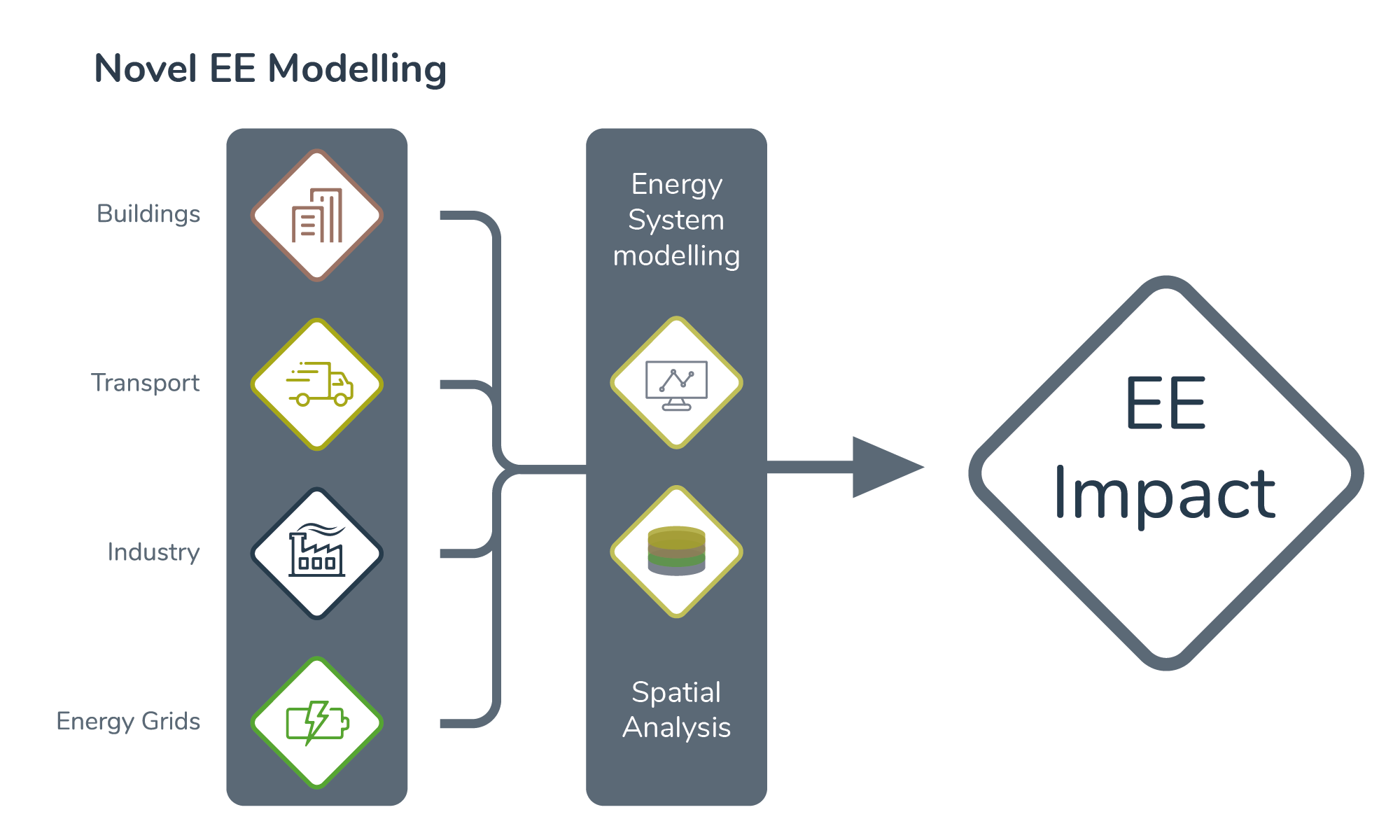Quantification of synergies between Energy Efficiency First Principle and renewable energy systems for 2050 decarbonisation (sEEnergies)
As a response to the European Commission’s 2050 decarbonization goals, sEEnergies uniquely considers all aspects of the Energy Efficiency (EE) First Principle. By applying it in sectors and markets, country-by-country and grid-by-grid, and by combining temporal and spatial analyses, sEEnergies will develop an innovative, holistic and research-based EE-modelling approach. sEEnergies comprises a combination of in-depth knowledge on the consumption side and in-depth analyses of the energy systems that enable a detailed scientifically based pool of knowledge needed to make EE potentials concrete and operational, and as a resource on its own.
